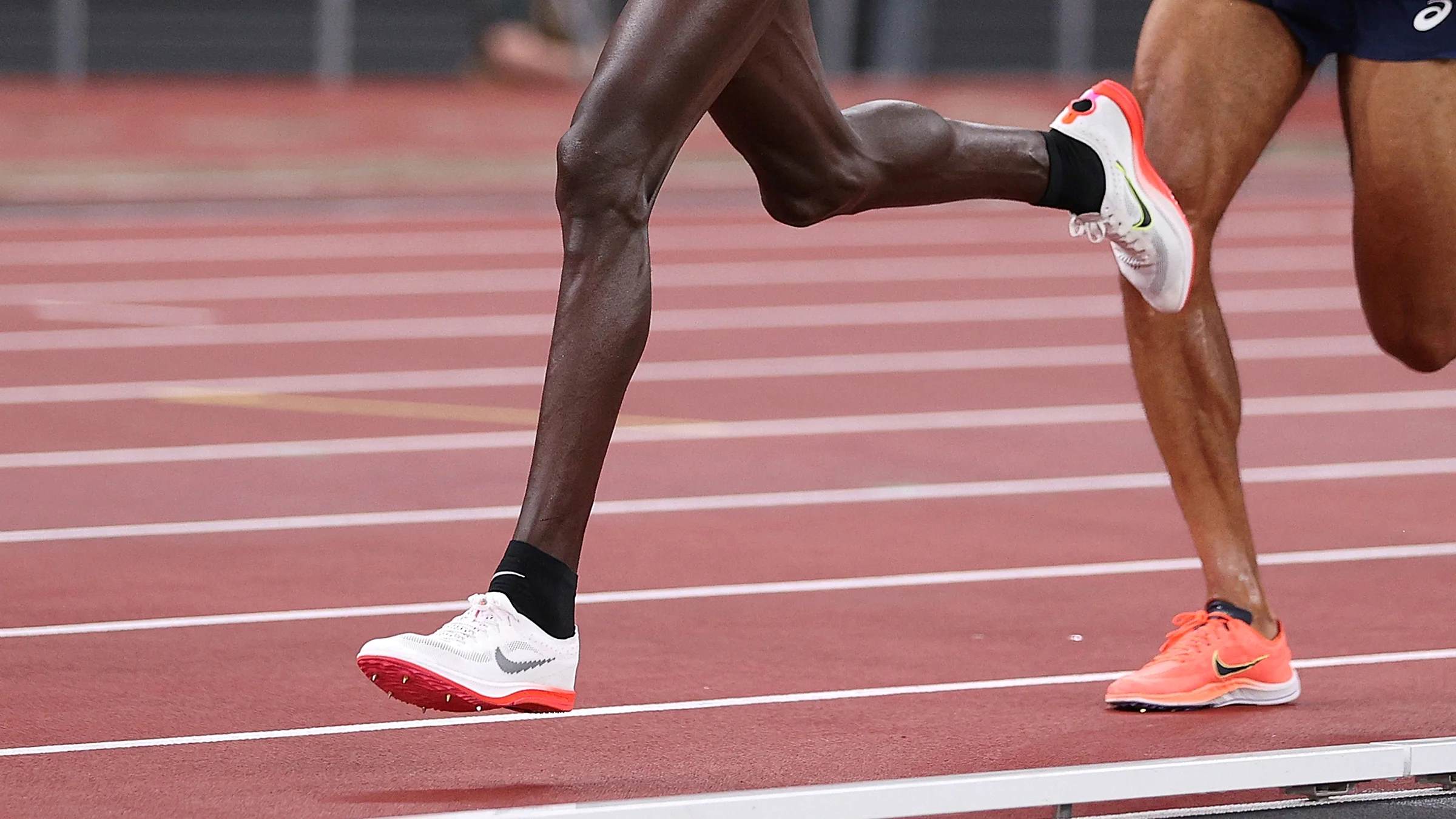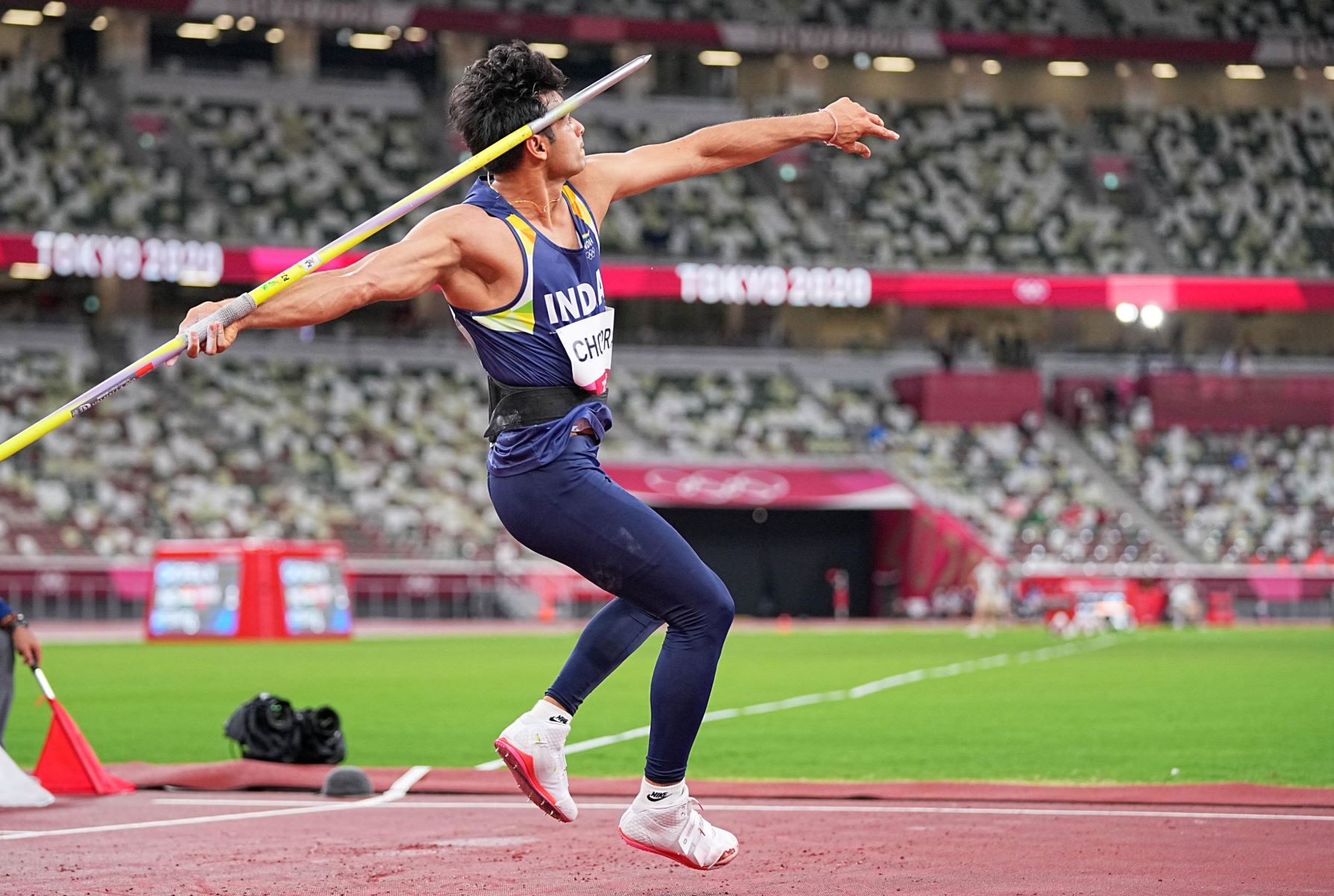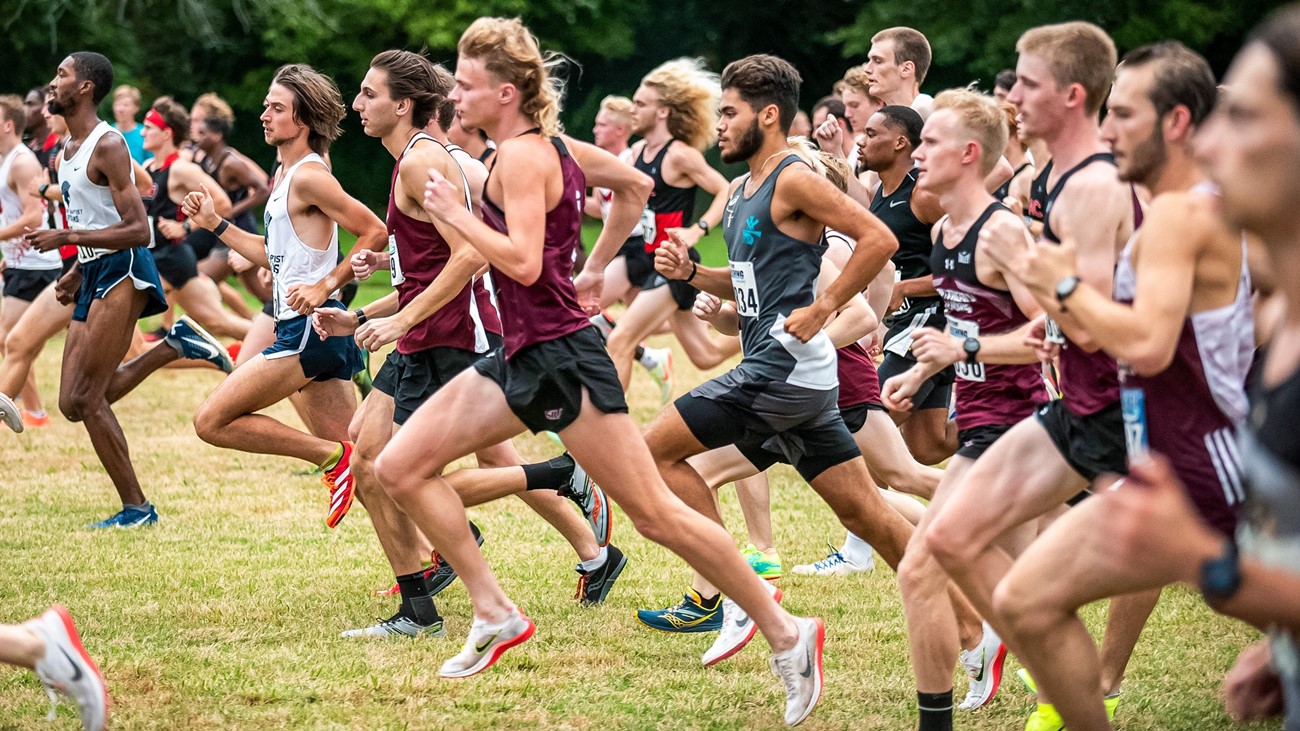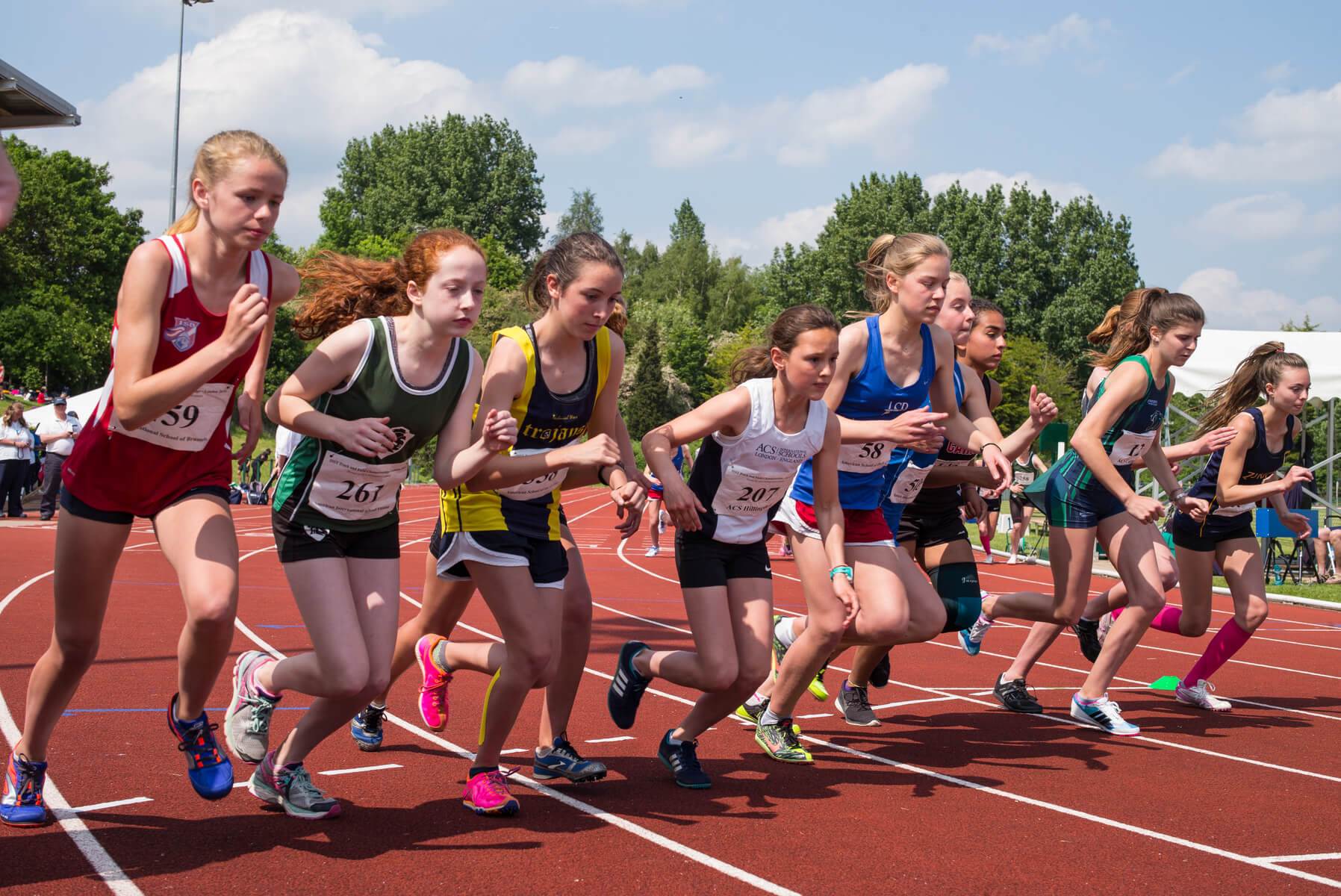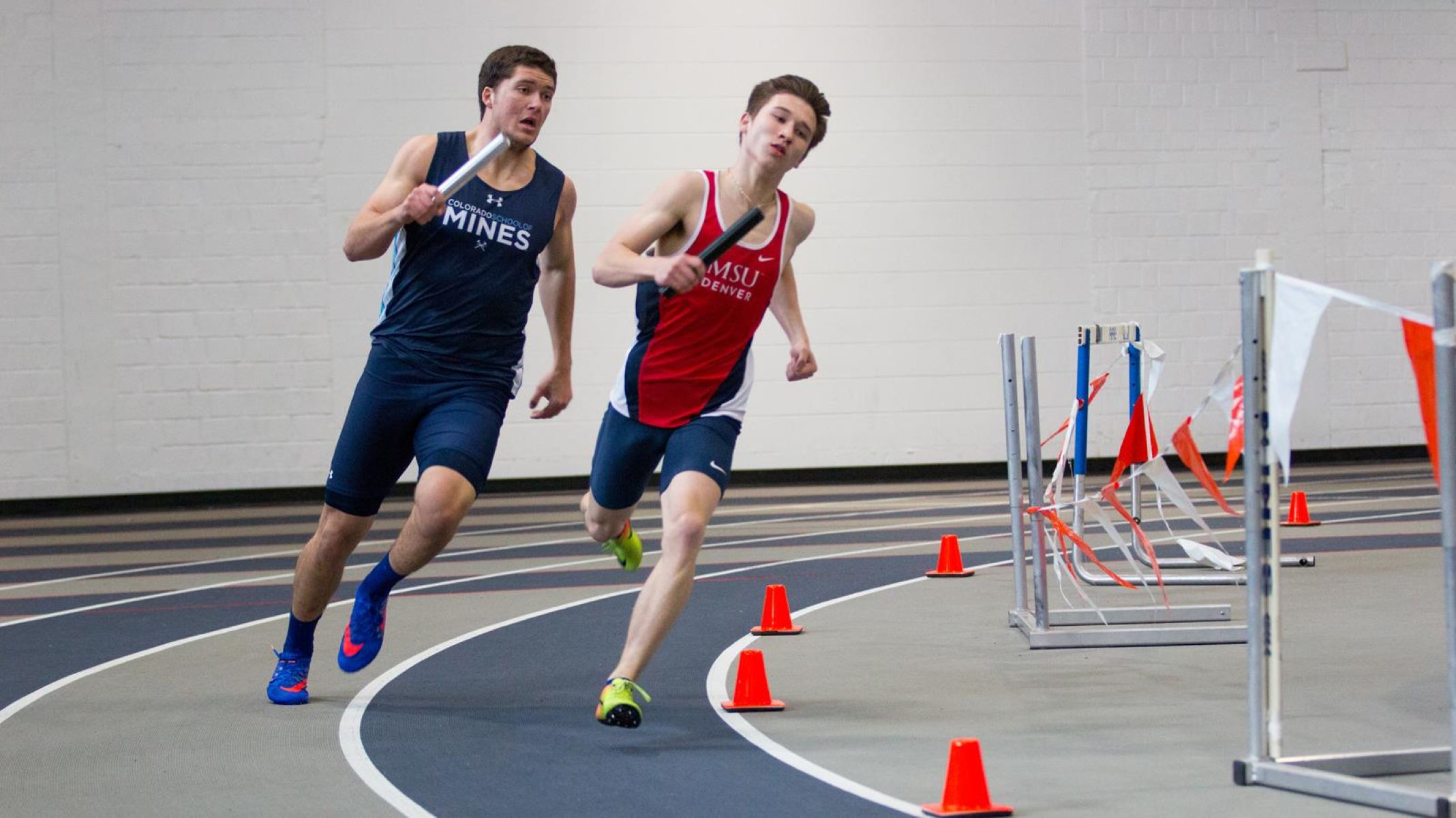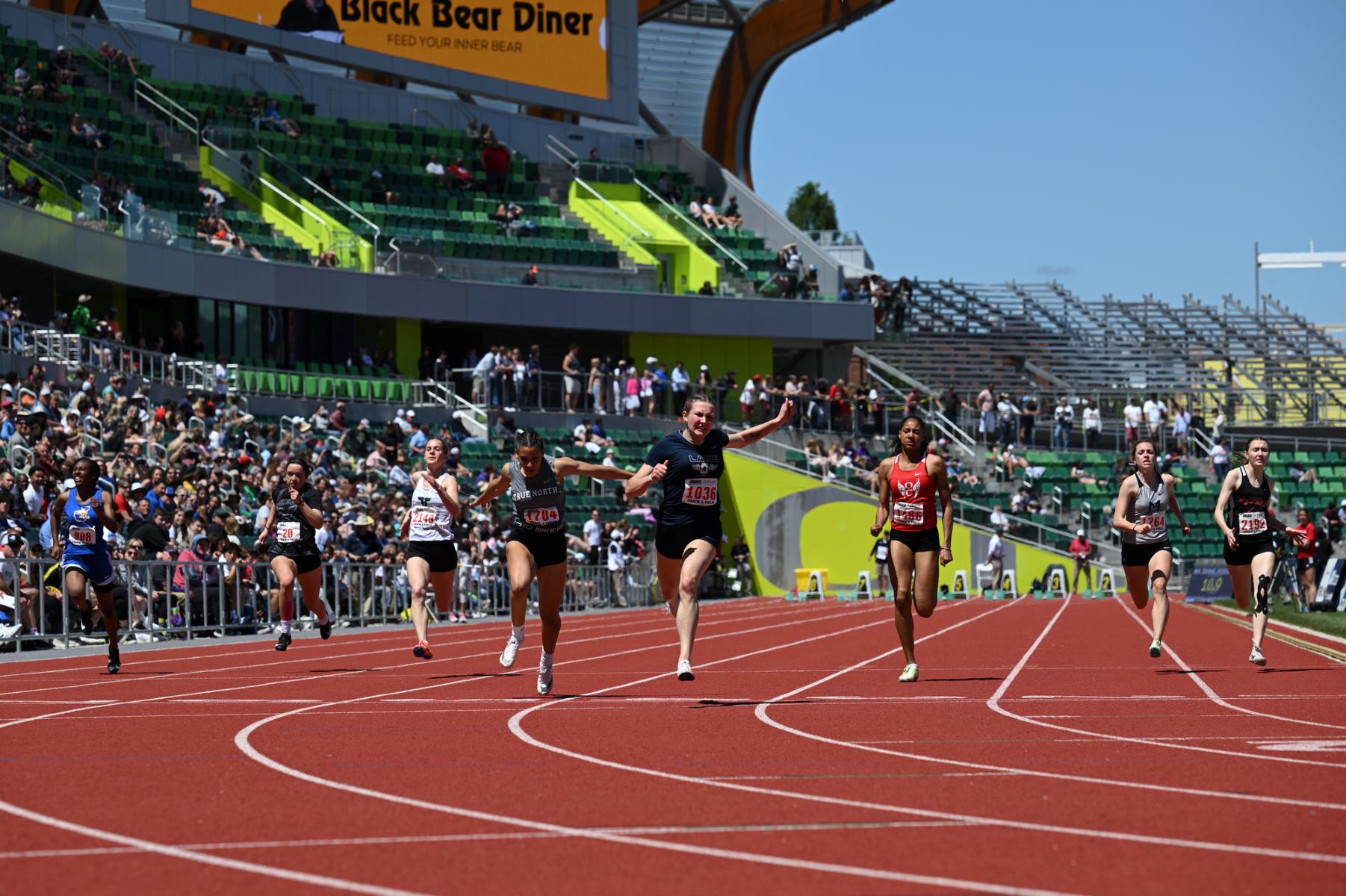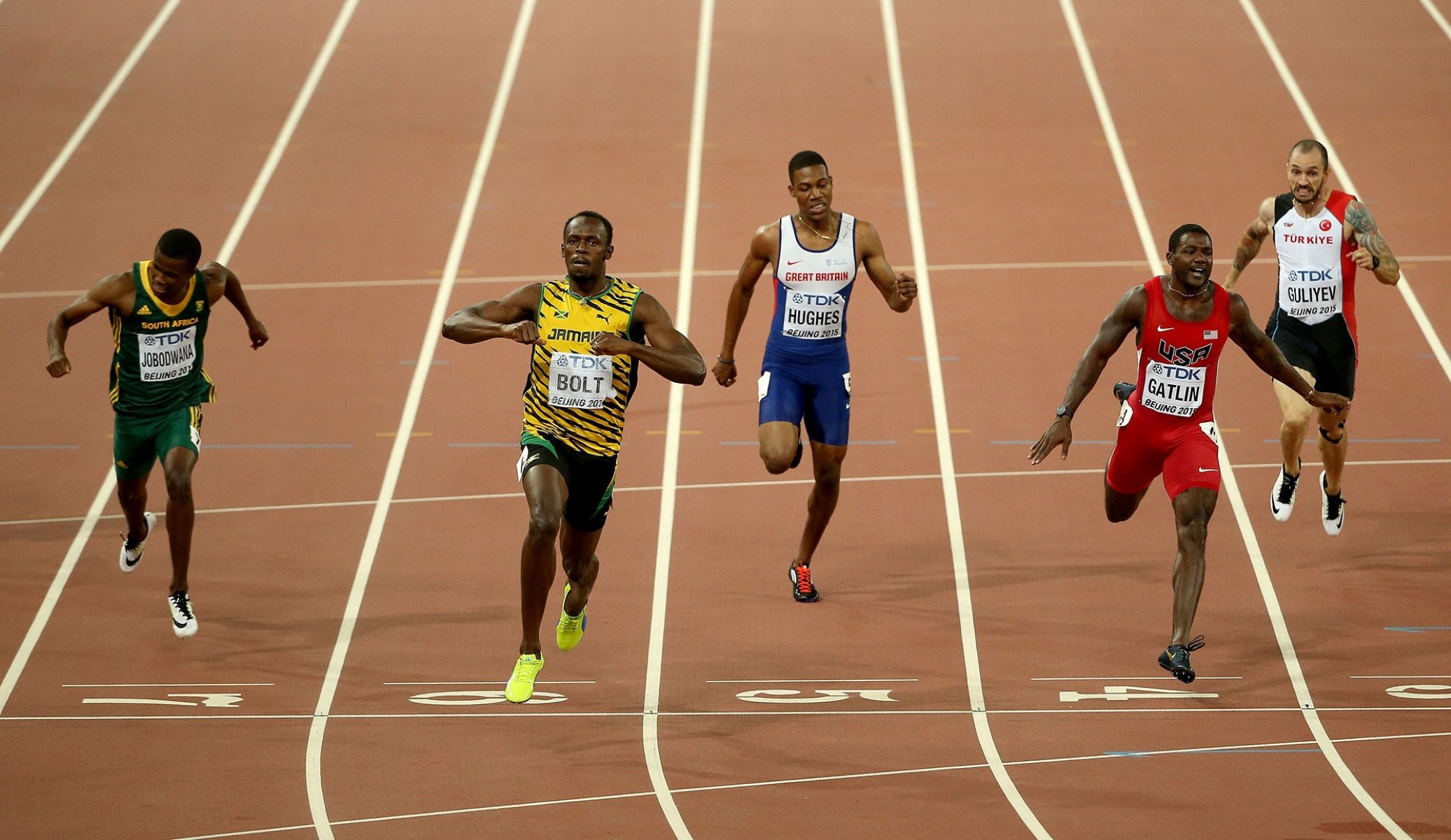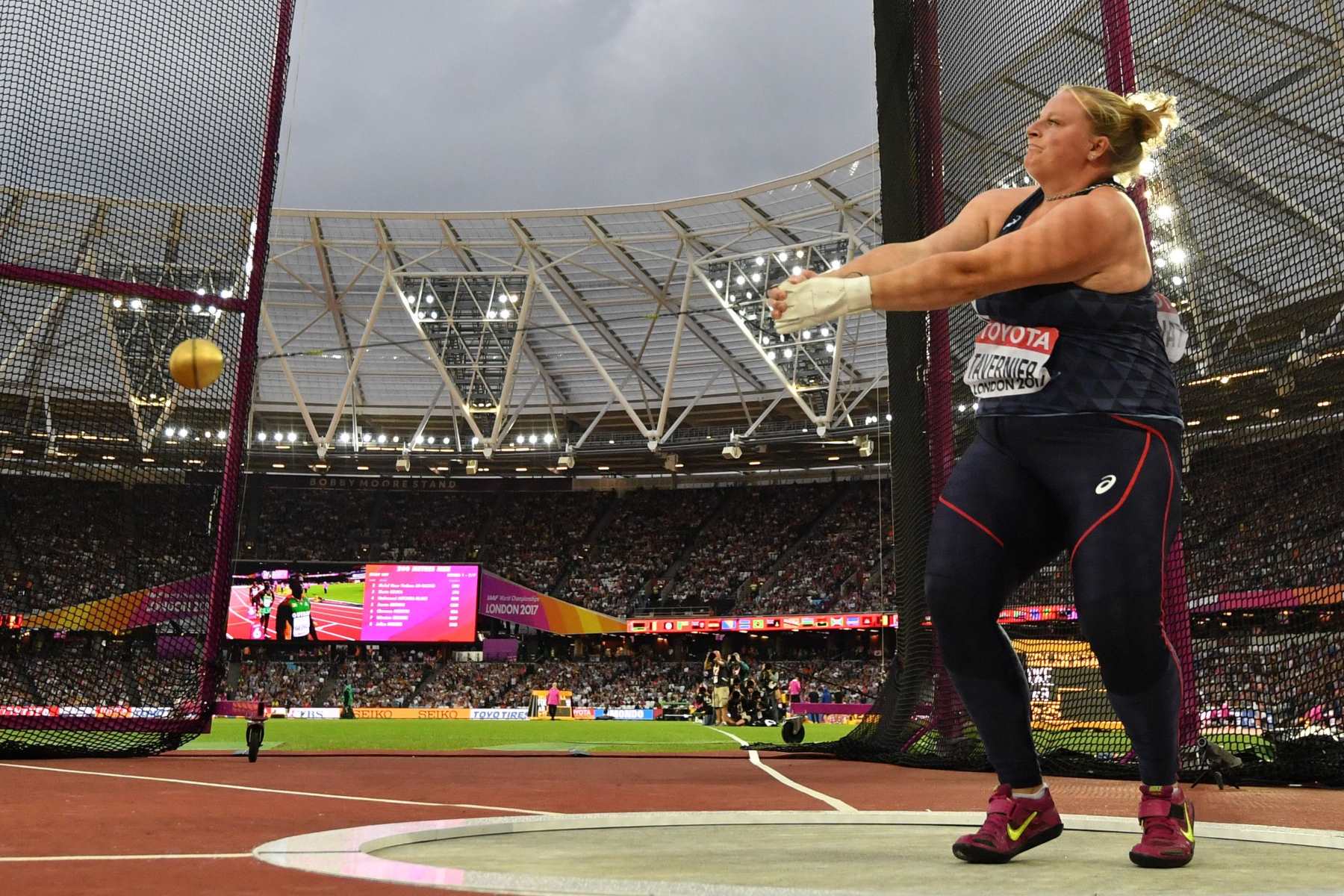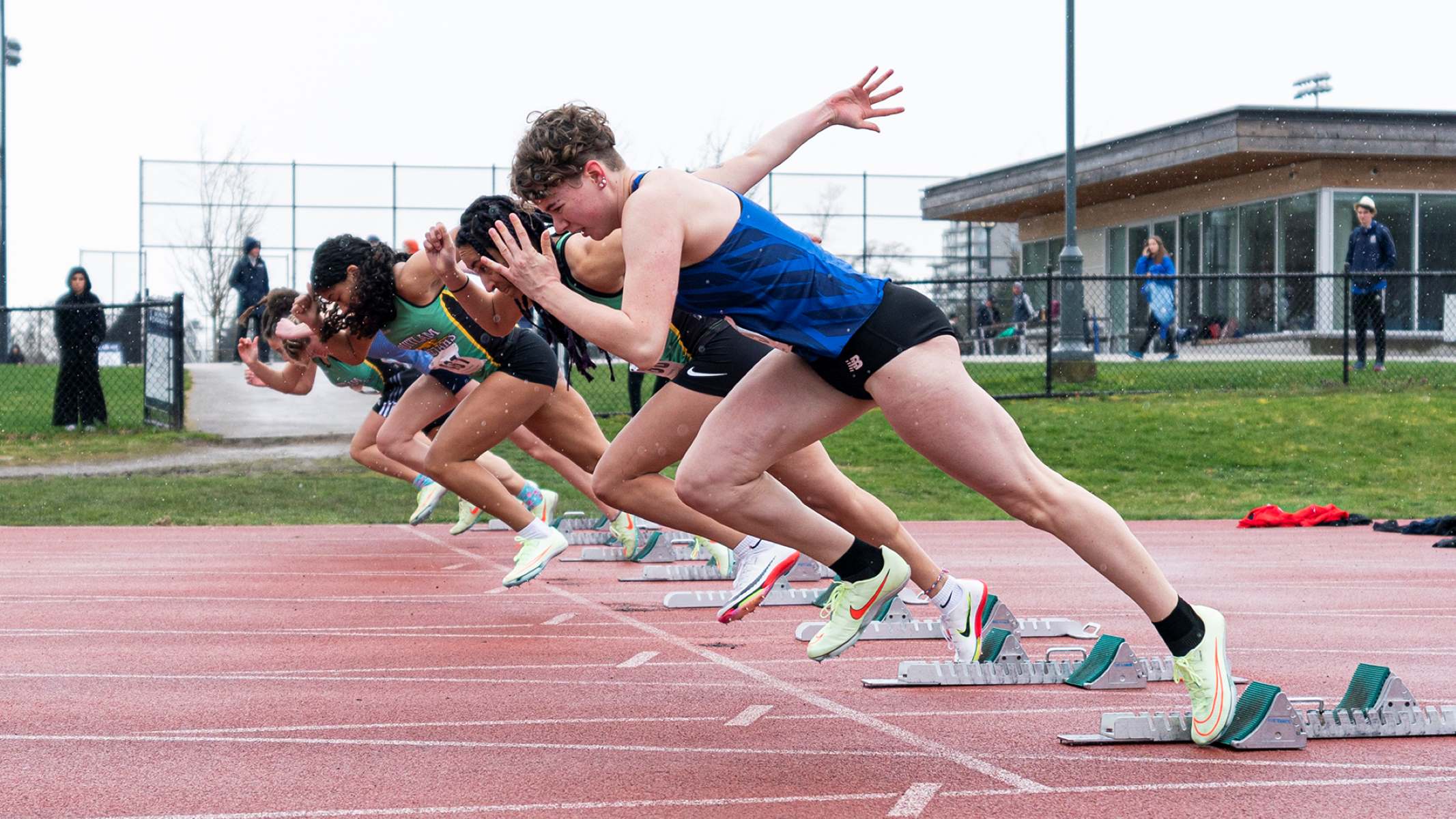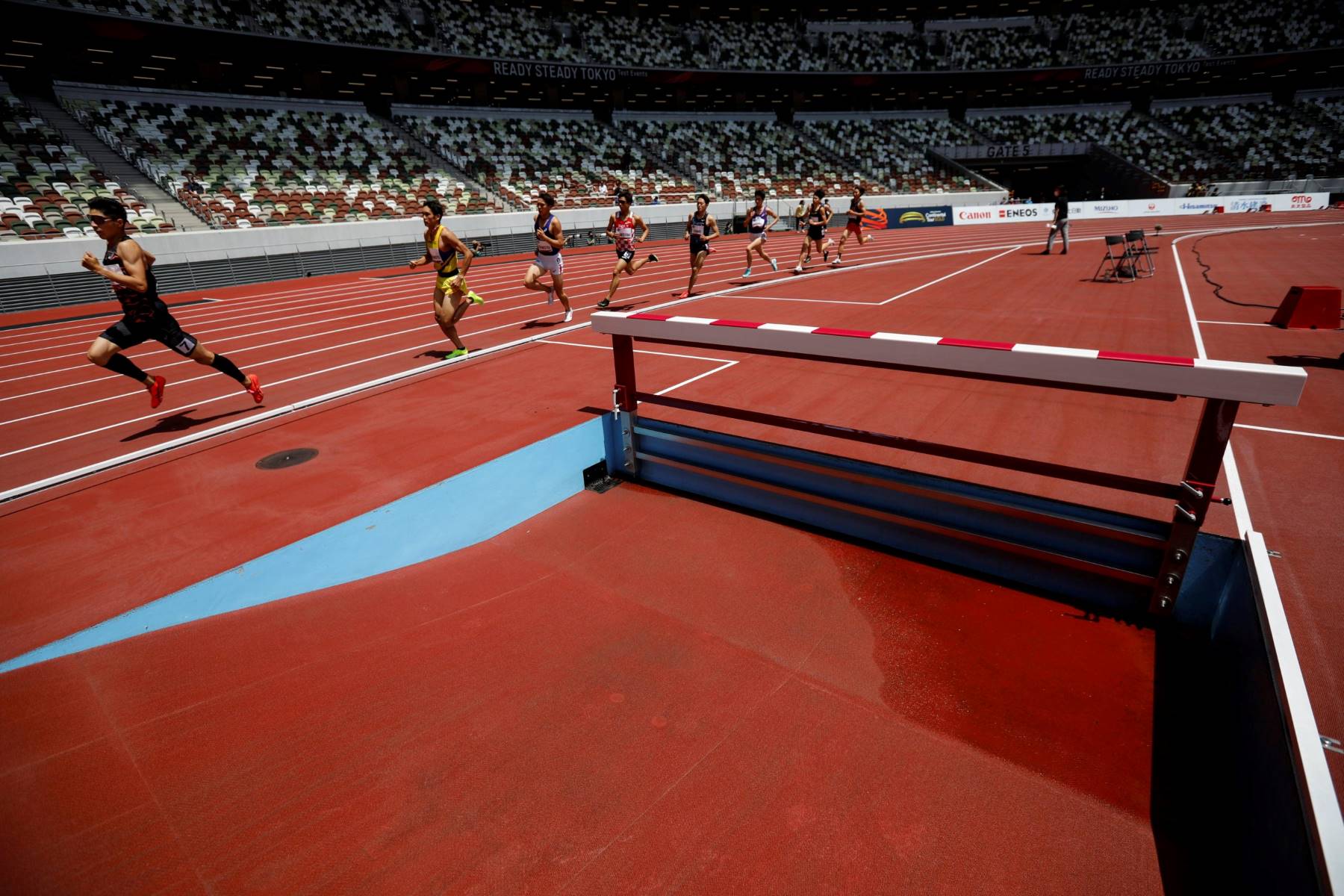Home>Misc>Featured>What Are The Weight Events In Track And Field
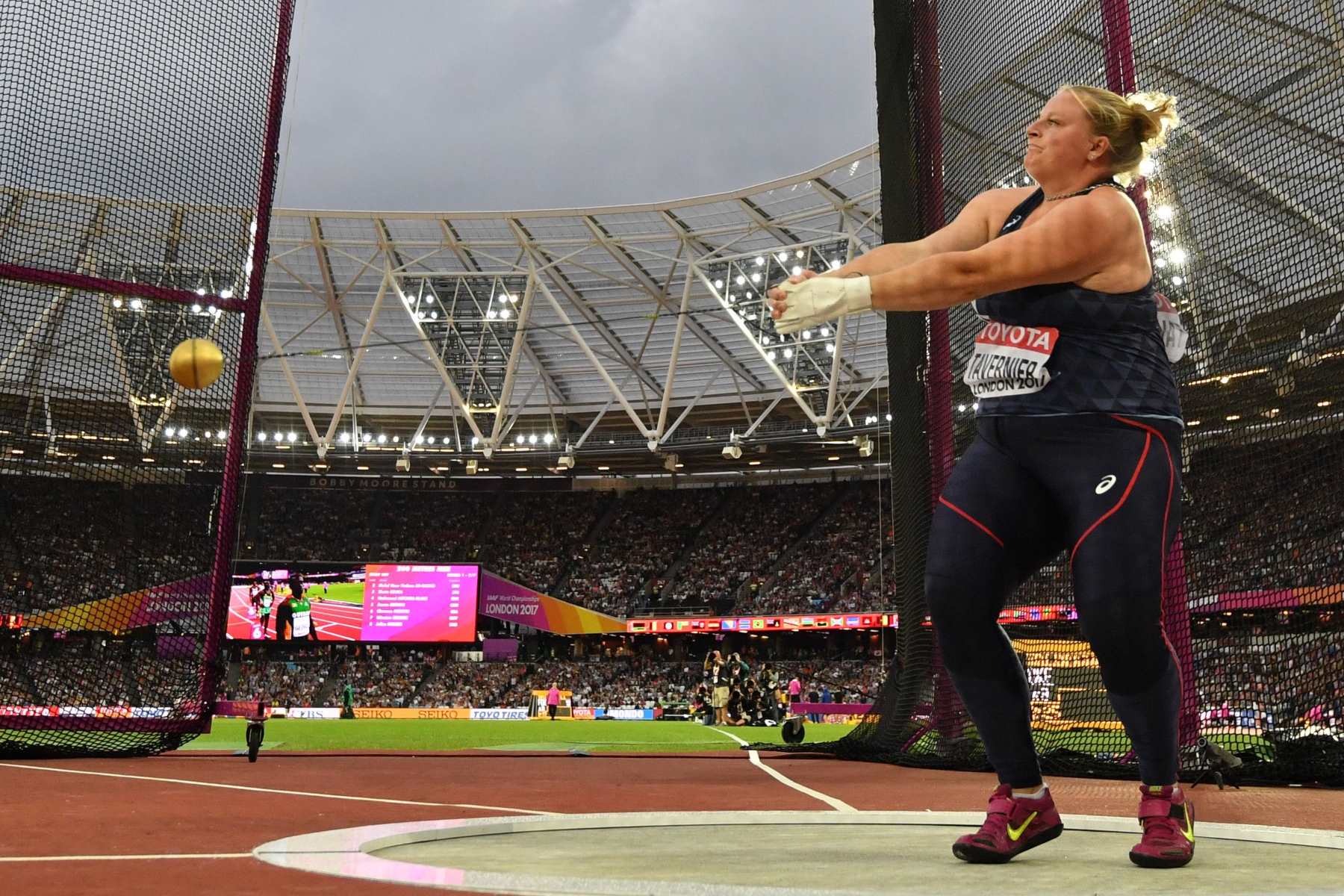

Featured
What Are The Weight Events In Track And Field
Published: November 12, 2023
Learn about the weight events in track and field, including shot put and discus throw. Discover the techniques and training required to excel in this featured discipline in athletics.
Introduction
Weight events are an integral part of track and field, adding strength and power to the sport. They require athletes to demonstrate their ability to heave, toss, or put heavy objects for distance or height. The weight events vary from throwing a shot put to launching a discus or hammer, and even to the highly specialized technique of the weight throw. These events not only showcase an athlete’s raw strength but also require a combination of speed, technique, and precision.
Weight events have a long and storied history in the world of athletics. Dating back to ancient civilizations, throwing heavy objects has been a test of strength and athleticism. Over time, these events have evolved to become highly technical disciplines that require years of training and practice to master.
In this article, we will delve into the world of weight events in track and field, exploring the different disciplines, the importance of weight training, and the techniques and skills required to excel in these events. We will also discuss the various weight categories in different track and field events and the precautions athletes need to take to prevent injuries.
Whether you are a seasoned athlete or a curious enthusiast, understanding the intricacies of weight events can deepen your appreciation for the dedication and skill required to compete in these disciplines.
What is weight in track and field?
In the realm of track and field, weight refers to the various objects that athletes throw, heave, or put for distance or height. These weight events include shot put, discus, hammer throw, and weight throw. Each event requires athletes to exhibit immense power, technique, and precision to propel the heavy object as far as possible.
The shot put is one of the most well-known weight events in track and field. Athletes grip a weighted spherical ball called a shot and launch it using a pushing motion. The discus event involves athletes spinning in a circle and releasing a round disc, while the hammer throw requires athletes to rotate while swinging a weighted hammer before releasing it. The weight throw, which is less commonly known, features athletes throwing a metal weight attached to a handle.
Weight events in track and field are not solely about pure strength. Technique and form play vital roles in achieving optimal distance or height. Athletes must employ proper footwork, body positioning, and timing to generate maximum power and control in their throws. Additionally, they need to be aware of the specific rules and regulations governing each event, such as the angles at which the objects must be thrown or the landing sector requirements.
Weight events are often high-intensity and thrilling to watch. They showcase the explosive power and physical prowess of athletes, as well as their ability to harness their strength effectively. The outcome of these events is determined by factors such as distance, height, or accuracy, depending on the event. Athletes aim to achieve their personal bests or outperform their competitors, leading to fierce competition and record-breaking performances.
Weight events not only add excitement to track and field competitions but also provide athletes with an opportunity to specialize in a specific discipline. These events require dedicated training, including weightlifting, plyometric exercises, and technical practice to improve strength, explosiveness, and throwing technique. Athletes must also maintain proper nutrition and conditioning to support their physical development and performance in weight events.
In the following sections, we will explore the significance of weight training for track and field athletes, the weight categories in different events, and the training and preparation required to excel in weight events.
Importance of weight in track and field
The weight events in track and field not only add excitement to the sport but also hold significant importance in the development of athletes’ overall athleticism. These events contribute to the physical, mental, and technical growth of athletes, making them stronger competitors in other track and field disciplines as well.
One of the key benefits of weight events is the improvement in strength and power. These events require athletes to generate explosive force to propel heavy objects through the air. The intense training and practice involved in weight events help athletes develop their muscular strength, particularly in the upper body, core, and lower body. This increased strength translates into enhanced performance in other track and field events that demand explosive power, such as sprinting and jumping.
In addition to strength, weight events also enhance an athlete’s coordination, balance, and body control. Athletes must maintain proper form and technique throughout the throwing motion to optimize their performance. This requires precise footwork, body positioning, and timing. Through consistent practice, athletes develop body awareness and the ability to execute complex movements with fluidity and accuracy. This improved coordination carries over to other track and field events that require agility and precise movement patterns.
Another benefit of weight events is the mental toughness they cultivate. These events require athletes to remain focused, composed, and confident in high-pressure situations. As athletes strive to improve their distances or heights, they must overcome challenges and setbacks, learning to persevere and maintain a positive mindset. This mental fortitude developed in weight events can positively impact an athlete’s performance in all aspects of their track and field career.
Furthermore, weight events provide athletes with an opportunity to specialize and excel in a specific discipline within track and field. By dedicating time and effort to training in weight events, athletes can become specialists in shot put, discus, hammer throw, or weight throw. This specialization allows athletes to carve out a niche for themselves in the sport and potentially open doors to higher levels of competition, including national and international tournaments.
Overall, weight events play a crucial role in the development of track and field athletes. They improve strength, power, coordination, mental toughness, and specialization, all of which contribute to overall athletic performance. Whether an athlete chooses to pursue weight events as their primary discipline or as a means of enhancing their abilities in other track and field events, the importance of weight training cannot be underestimated.
Weight categories in different track and field events
Weight categories play a significant role in ensuring fair competition in various track and field events. The weight of the objects used in each event is carefully determined based on factors like gender, age, and skill level. Let’s explore the weight categories in some of the popular weight events in track and field:
Shot Put: In the shot put event, the weight of the shot depends on the category of the athlete. For male athletes, the senior and junior divisions typically use a 7.26 kg (16 lb) shot, while youth and masters divisions may use lighter shot weights. Female athletes usually throw a 4 kg (8.8 lb) shot in the senior and junior divisions, with lighter weights for youth and masters athletes.
Discus: In discus throwing, the weight of the discus varies for different categories. Male athletes in senior and junior divisions throw a 2 kg (4.4 lb) discus, while female athletes throw a 1 kg (2.2 lb) discus in the same divisions. Youth and masters athletes may use lighter weights depending on their age group.
Hammer Throw: Hammer throw athletes also have different weight categories based on their division. Male athletes in senior and junior divisions use a 7.26 kg (16 lb) hammer, while female athletes use a 4 kg (8.8 lb) hammer in the same divisions. Similar to other events, youth and masters athletes may use lighter hammers.
Weight Throw: The weight throw, a lesser-known event, typically features two weight categories: 16 lb (7.26 kg) for male athletes and 20 lb (9.07 kg) for female athletes. This event requires a unique technique and is often seen in indoor track and field competitions.
It’s important to note that the weight categories can vary across different organizations, competitions, and age groups. Therefore, athletes should always refer to the specific event rules and regulations to determine the appropriate weight for their category.
Weight categories help level the playing field and ensure fairness in competition. They allow athletes of similar characteristics and abilities to compete against one another. The weight categories also provide a benchmark for athletes to compare their performances and strive for improvement within their specific division. Whether an athlete competes in shot put, discus, hammer throw, or weight throw, being aware of the weight categories is essential for proper training, preparation, and competition.
Training and preparation for weight events
Training for weight events in track and field requires a combination of strength training, technical practice, and specific conditioning to maximize performance. Here are some key elements to consider when preparing for weight events:
Strength Training: Building overall strength is essential for weight events. Athletes should incorporate weightlifting exercises such as squats, deadlifts, bench presses, and overhead presses into their training regimen. These exercises target the muscles used in throwing motions, helping to develop power and explosiveness. It is crucial to work with a qualified strength and conditioning coach to ensure proper form and technique when performing these exercises.
Technical Practice: Weight events require precise technique and form to optimize performance. Athletes should focus on proper footwork, body positioning, and release mechanics specific to each event. Practicing with lighter implement weights or using drills that simulate the throwing motion can help athletes refine their technique. Working with a coach or experienced thrower can provide valuable guidance and feedback to improve technical proficiency.
Specific Conditioning: Weight event training should incorporate specific conditioning exercises to enhance muscle endurance, stability, and coordination. Plyometric exercises such as box jumps, medicine ball throws, and explosive jumps can help develop fast-twitch muscle fibers and improve the ability to generate power quickly. Core exercises, such as planks and Russian twists, help strengthen the muscles used for balance and stability during the throwing motion. Additionally, incorporating rotational exercises like cable twists or woodchoppers can improve rotational power, which is crucial in many weight events.
Mental Preparation: Weight events require mental focus and composure. Athletes should practice visualization techniques to mentally rehearse the throwing motion and visualize successful performances. Developing mental toughness through techniques like positive self-talk and goal setting can help athletes stay calm and confident during competitions. It’s also vital to establish a pre-competition routine that includes warm-up exercises, visualization, and mental preparation to enter the competition with a clear and focused mindset.
Diet and Recovery: Proper nutrition and sufficient rest and recovery are crucial for optimal performance in weight events. Athletes should prioritize a well-balanced diet that includes sufficient protein for muscle repair and growth, carbohydrates for energy, and healthy fats for overall health. Hydration is also crucial to maintain performance and prevent fatigue. Adequate rest and recovery are essential to allow the body to repair and adapt to training. Athletes should prioritize sleep, manage stress levels, and engage in recovery practices such as stretching, foam rolling, and massage.
Remember, consistency and patience are key throughout the training process. It takes time to develop strength, technique, and mastery in weight events. Working closely with coaches, seeking guidance from experienced throwers, and staying committed to a well-structured training program will help athletes progress and reach their full potential in weight events.
Techniques and form in weight events
Mastering proper techniques and form is crucial for success in weight events in track and field. Each weight event requires specific movements and positions to generate maximum power and control during the throwing motion. Here are some key techniques and forms to consider in weight events:
Shot Put: In shot put, a strong and explosive push is necessary to propel the shot as far as possible. Athletes begin by holding the shot against their neck or shoulder with the hand placed in the shot’s neck. The throwing motion involves a powerful push-off from the legs, transferring the energy through the hips, core, and upper body. Athletes should focus on maintaining a stable and balanced position, extending the arm and releasing the shot at the optimal angle for maximum distance.
Discus: Discus throwing requires a combination of speed, coordination, and technique. Athletes start by gripping the discus with their fingertips and spinning in a circle to generate rotational force. The throwing motion involves a smooth and continuous rotation, with the athlete shifting weight from the back foot to the front foot while maintaining a stable and balanced position. The release of the discus occurs at the front of the throwing circle, with the arm fully extended and the wrist flicked to impart spin on the discus.
Hammer Throw: The hammer throw is known for its unique technique and circular motion. Athletes grip the hammer handle and start by winding the hammer around their head using rapid and controlled footwork. As the athlete spins, they generate centrifugal force and build up speed. The release of the hammer occurs at the front of the circle with the arms fully extended. Proper timing and coordination are essential to maintaining balance and control throughout the throwing motion.
Weight Throw: The weight throw involves similar principles to the hammer throw, but with a different implement. Athletes grip the weight attached to a handle and use rotational footwork to generate power and speed. The release of the weight occurs at the front of the circle, with the arms fully extended and the body in a stable and balanced position.
Regardless of the weight event, athletes should focus on proper footwork, body positioning, and timing. It’s crucial to execute each movement with precision and fluidity. Athletes should work on developing explosive power through exercises such as medicine ball throws, plyometric jumps, and Olympic lifts. Consistent practice and feedback from coaches or experienced throwers are valuable in refining and perfecting techniques.
Video analysis can also be a helpful tool for athletes to review their throwing technique and make necessary adjustments. By studying and emulating successful throwers, athletes can gain insights into proper form and technique. Attending camps or workshops hosted by experienced coaches and athletes can provide opportunities for in-depth instruction and guidance in weight event techniques.
Remember, mastering techniques and form in weight events takes time and dedication. Ongoing training, practice, and a focus on proper mechanics will greatly contribute to an athlete’s success in weight events.
Common injuries and precautions in weight events
While weight events in track and field can be exhilarating, they also come with the risk of injuries. Understanding common injuries and taking necessary precautions can help minimize the likelihood of injury and ensure the safety of athletes. Here are some of the common injuries and precautions to consider:
Shoulder Injuries: Weight events require repetitive and forceful movements that put strain on the shoulders. Athletes may experience shoulder injuries such as rotator cuff strains, tendinitis, or dislocations. To mitigate these risks, athletes should focus on maintaining proper shoulder alignment throughout the throwing motion. Strengthening the shoulder muscles through exercises like shoulder presses and external rotations can help prevent injuries. It’s also essential to warm up adequately and include shoulder mobility exercises in the warm-up routine.
Back Injuries: The explosive power generated in weight events places a significant demand on the back muscles. Athletes may experience lower back strains, muscle spasms, or herniated discs if proper form and technique are not followed. Engaging in regular core strengthening exercises, such as planks and back extensions, can help stabilize the spine and prevent back injuries. Maintaining good posture and avoiding excessive twisting or bending of the back during training and competition is essential.
Elbow and Wrist Injuries: The repetitive throwing motion in weight events can lead to overuse injuries in the elbows and wrists. Athletes may experience conditions like tennis elbow or wrist tendinitis. Adequate warm-up and stretching of the wrists and elbows are important before training and competitions. Implementing mobility exercises and strengthening exercises for the forearm muscles can also help prevent these injuries. If athletes experience persistent pain or discomfort in these areas, it is important to seek medical attention and take necessary rest to avoid further damage.
Ankle and Knee Injuries: Weight events involve complex footwork and rotational movements that put stress on the ankles and knees. Athletes may experience sprained ankles, ligament tears, or meniscus injuries. Wearing supportive and properly fitting footwear is crucial to provide stability and reduce the risk of ankle and knee injuries. Athletes should also focus on strengthening the muscles around the ankles and knees through exercises like calf raises and squats. Practicing proper planting and pivoting techniques can help maintain joint stability during the throwing motion.
Precautions: Taking appropriate precautions can significantly reduce the risk of injuries in weight events. Some important precautions include:
- Gradually increasing training intensity and volume to allow the body to adapt and minimize the risk of overuse injuries.
- Using proper technique and form during training and competition to avoid unnecessary strain on muscles and joints.
- Wearing protective gear, such as elbow and knee pads, to provide added support and cushioning.
- Ensuring the training area is clear of obstacles and debris that could pose a risk during throwing motions.
- Listening to the body and addressing any lingering pain or discomfort promptly to prevent exacerbation of injuries.
- Working with a qualified coach or trainer who can provide guidance on proper technique, training plans, and injury prevention strategies.
By being proactive and taking precautions, athletes can enjoy the benefits of weight events while minimizing the risk of injuries. It is crucial to prioritize safety and prioritize proper technique and form to ensure a long and successful career in weight events.
Conclusion
Weight events play a significant role in track and field, showcasing the strength, power, and technique of athletes. From shot put to discus, hammer throw to weight throw, these events require a combination of physical prowess, mental fortitude, and technical proficiency. The importance of weight training, specific conditioning, and proper form cannot be overstated when it comes to excelling in weight events.
Understanding the weight categories in different track and field events is essential for athletes to compete on a level playing field. Athletes must train diligently, focusing on strength development, technical practice, and mental preparation to enhance their performance in weight events. Moreover, following precautions and being aware of common injuries can help athletes minimize the risk of harm and foster a safe training environment.
Weight events offer athletes the opportunity to specialize and excel in a specific discipline within track and field. The mastery of techniques and form, combined with consistent training and dedication, can lead to remarkable achievements in shot put, discus, hammer throw, or weight throw. These events not only add excitement to the sport but also contribute to an athlete’s overall athleticism, improving strength, power, coordination, and mental toughness.
Whether you are an athlete looking to compete in weight events or an enthusiast appreciating the artistry and skill of these disciplines, understanding the intricacies and requirements of weight events adds depth to your overall knowledge of track and field. It is a testament to the dedication and expertise required to excel in these demanding yet rewarding disciplines.
As weight events continue to captivate audiences worldwide, the future promises new records to be set, techniques to be refined, and athletic boundaries to be pushed. So, let us marvel at the awe-inspiring talents of weight event athletes, acknowledging the dedication, hard work, and passion that propel them to greatness in the world of track and field.
